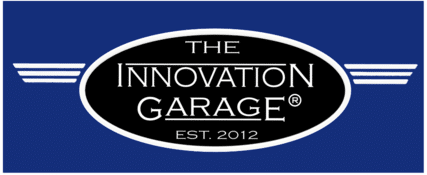
Let thy step be slow and steady, that thou stumble not. – Ieyasu Tokugawa
We had an interesting discussion in a recent “get to know each other” call with a client prospect. This individual was a senior leadership team member and potential collaborator. In learning about each other, we both shared the why, what and how of our mutual organizations and our mission statements.
As we explained what we do, the client prospect mirrored back to us the following;
“That’s really interesting… if I understand it correctly, as you talk about what you do, your team reminds me of a highly trained group of professionals. Martial Arts practitioners if you will. Like those who study the art of Akido. Your team takes the best of many methods, blends them, then adds in the natural energy of everything around you to solve a problem for your client. From that, your team teaches others, and builds it into something that no one has done before.”
BEST. DESCRIPTION. EVER.
This client description then got us thinking. Thinking on matters of team development and what makes teams effective. What makes leaders and their leadership styles effective. Basically, What makes a practitioner of any skill effective. As our advisory board team has so many diverse backgrounds and personal interests, and we have worked with so many organizations over the years, including; military, first responders, non-profits and large publicly traded organizations, we see a single training principle that is common and applies to all these situations.
That single training principle is “Slow is Smooth. Smooth is Fast.”
What’s that you say? That’s counterintuitive. No way. That’s backwards. Sorry. The logic doesn’t seem quite right.
If you question the logic, we understand.
This training principle is important in that it requires you to actively and consciously slow down when you first do something. Being intentionally deliberate, and very measured in your steps.
Why? So, once you have been trained and know the steps, you can practice them with repetition, increased speed and then truly go faster.
Still skeptical? Let us explain, with some real life stimulus and diversity.
One of our advisors has spent much of his professional career in public law enforcement. He has trained with police officers, SWAT and Sniper Teams, and been part of many critical and stressful situations as a first responder. The teams practice slowly ensuring each aspect of what they do, each body motion, each muscle movement, and in some cases, every breath is measured and controlled during training. It is then, and only then, that once the strategy and tactics are understood, the team works collectively to increase their speed.
Another advisor in his spare time loves to race cars. In road tracks across the country, each time he visits the track, it’s important for him to drive the track a few times and learn. Then, based on the test laps set up the car, and get a true feel for the track, by tuning and adjusting the car. Each time, being very slow and deliberate before the time trials start. As he says, “Same is true for on track race driving – we start working on track strategy and smoothness first. Speed comes later, sometimes surprisingly quickly. Only at the very edge of speed will you find lots of steering input, but most never get there.”
Some of us on the team love distance running and playing music. In both cases, in order to improve our skills, we have to slow down to run farther. We have slow down to manage the complexities of a new piece of music. We can’t run the full distance when we start, or play the music piece at tempo just yet. We have to slow down to run farther and eventually run faster. Just as we have to slow down to learn the chord progressions, or the rhythmic patterns to make the music sound just right.
These principles apply to you, the organization you lead, and your team that you want to build more capability in.
Whether it’s culture change, organizational development, lean startup, product design, innovation, a safety initiative, operational excellence or a supply chain capability build.
Apply the “Slow is Smooth, Smooth is Fast.” training principle to your organizational initiative.
Slow and Smooth. Then speed up as your confidence builds.
Move. Get started. Find some folks to train up your team.
Slow and Smooth.
At The Innovation Garage®…
We help organizations become more build capability to grow. We build strategy. We build ideas and the capability of teams. We design products, services and supply chains. We guide leaders from startup, non-profit, and the Global Fortune 500 to intentionally self-disrupt their offerings and organizations.
We provide world-class education, tools and technology on how to craft business operating systems focused on long-term profitable growth.
